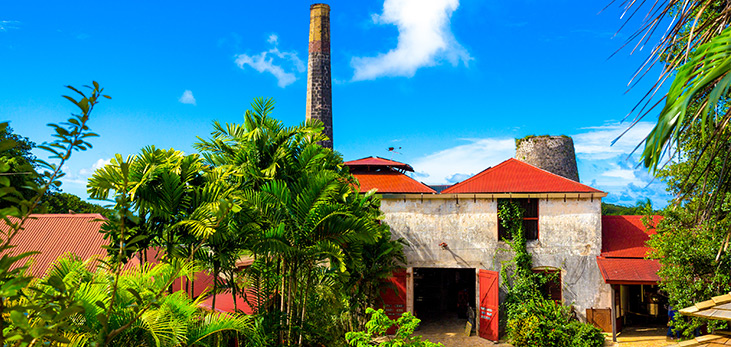|
PlantationsPlantations on the island of Barbados are very unique in that they are easily identified by their large fields where crops are grown for both local and export purposes. In the 18th century, Barbados has well over six hundred (600) plantations on the island. Plantations in Barbados were cultivated in various groups and this enabled the island to swiftly become the largest sugar producer in the world. Despite these statistics, nearing the middle of the 17th century, Barbados lost its high rank to Jamaica and Saint-Domingue as they became the largest sugar producers in the world. In the early days of slavery on the island of Barbados, these fields were used primarily for the production of tobacco, cotton and sugar. This very land was bought through the wealth that was aggressively accumulated during the early days of the sugar industry that in turn was able to maintain these fields and build great plantation houses. Plantation HousesThe construction of plantation houses or great houses on the island of Barbados was orchestrated by the British after their arrival on the island in 1625. Plastered with both tradition and history, plantation houses are usually built of solid structures and sit on acres of land, these houses were built with style and ventilation in mind. The very structure of plantation houses in Barbados was due to the weather patterns that existed and still exist in the Caribbean Region. They were built by African craftsmen who designed them to sustain winds in the event of a hurricane. Open spaces throughout these houses and their large windows, aided in ventilation. Georgian and Victorian architecture was quite prevalent in the 17th century and so many plantation houses in Barbados were built with this architectural guide in mind. The Garrison Historic Area is awash with this Georgian style of building. To this day, Barbados still has a number of plantation houses that have been restored to their original style but there are quite a few that have been left to the elements. A lot has occurred since the time of the plantation houses as some have been converted for both private and commercial use. On the island of Barbados, two (2) plantation houses have been restored to their original state and are open for public viewings. There are Sunbury Plantation House and St. Nicholas Abbey. |



